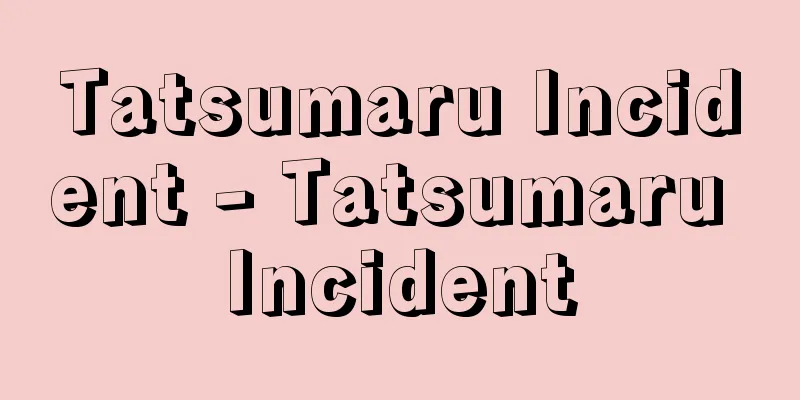Yujo Goto

|
Year of death: May 7, 1512 (June 20, 1512) Year of birth: Eikyo 12 (1440) A sword fitting metalworker from the Muromachi period. The founder of the Goto clan, the head family of sword fitting metalworkers. He is said to have been born in Mino Province (Gifu Prefecture) as the eldest son of Goto Mototsuna. His childhood name was Tsunemitsumaru, and he was commonly known as Shirobei and Masaoku. The name Yujo is said to be his Buddhist name after he shaved his head and became a monk. He first served as a close aide to the 8th shogun of the Muromachi shogunate, Ashikaga Yoshimasa, but later quit and devoted himself to sword fitting metalwork. He was granted 300 cho of land within Sakamoto Hongo in Omi Province (Shiga Prefecture) by the Ashikaga family, and was granted imperial permission as a Hoin during the reign of Emperor Gohanazono. His style was strongly influenced by Mino carving from his hometown, and he incorporated designs from the Kano school of painting into it, creating the foundation for the elegant tradition of sword fitting metalwork known as the Goto style. The main types of works were Sanshomono (three-piece sword fittings) consisting of Menuki, Kogai, and Kozuka. The preferred themes were lions and dragons, but there were also tigers, wet crows, Sanbaso, Noh tools, and flowers. The base metal was high-quality and expensive materials such as gold and shakudo, and the designs were engraved on a gyocho ground. In later generations, his skills became semi-legendary as he was the founder of the Goto family. None of Yujo's works are signed by him, and those that are signed are the ones that were added later. His representative works that remain include Important Cultural Properties "Shishi-botan-zukuri Kosa-katana Koshirae," "Kurikara Sanshomono," "Nure-garasu Sanshomono," and "Nemuri Hotei Nishomono" (all in the possession of the Maeda Ikutoku Association). He had two sons and one daughter, but the eldest son died young, so the second son, Munenori, succeeded him as the second head of the Goto family. He is said to be buried at Rendaiji Temple in Kyoto. The Goto family, whose ancestor was Yujo, continued unbroken for 17 generations until the end of the Edo period: Yujo, Sojo, Joshin, Mitsujo, Tokujo, Eijo, Kenjo, Sokujo, Teinojo, Renjo, Tsunojo, Jujo, Enjo, Katsunori, Shinjo, Hojo, and Norijo. During this time, they served the Ashikaga, Toyotomi, and Tokugawa Shogun families, and were particularly known as family engravers, and their status was highly valued, distinguishing them from ordinary town engravers. As a result, the Goto family's works over the generations were constrained by status and tradition as family engravers, and the metals and designs were fixed, while at the same time, the creativity and individuality of the works themselves were undeniably uniform. The first three, Yujo, Sojo, and Joshin, were particularly popular among samurai, and were known as the Upper Three. (Kashima Masaru) Source: Asahi Japanese Historical Biography: Asahi Shimbun Publications Inc. About Asahi Japanese Historical Biography |
|
没年:永正9.5.7(1512.6.20) 生年:永享12(1440) 室町時代の刀装金工家。刀装金工の宗家,後藤家の始祖。後藤基綱の嫡子として,美濃国(岐阜県)に生まれたと伝えられる。幼名を経光丸,通称は四郎兵衛,正奥と諱した。祐乗の名は剃髪入道後の法号とされる。はじめ室町幕府8代将軍足利義政の側近に仕え,のちにこれを辞してもっぱら装剣金工を業とした。足利家より近江国(滋賀県)坂本本郷内に300町を支給され,後花園天皇のときに法印の勅許を受けた。作風は出身地の美濃彫りの影響を強く受け,これに狩野派絵画の図様などを取り入れ,格調高い,いわゆる後藤風と称される装剣金工の伝統の基礎を作りあげた。作品の種類は,目貫,笄,小柄からなる三所物が主で,題材は獅子や竜を好み,ほかに虎,濡烏,三番叟,能道具,花卉などもある。地金は金や赤銅など良質で高価な材質を用い,魚々子地に高彫りで図柄を表した。後世,その技量は後藤家の祖として半ば伝説化するにいたった。祐乗の作品には自署有銘のものは皆無で,有銘ものは後世の極め銘である。現存する代表作には重要文化財「獅子牡丹造小さ刀拵」「倶利迦羅三所物」「濡烏三所物」「眠布袋二所物」(いずれも前田育徳会蔵)などがある。2男1女があったが,長男は早世したため,次男宗乗が後藤家2代目を継いだ。京都蓮台寺に葬られたと伝えられる。 この祐乗を祖とする後藤家は,祐乗‐宗乗‐乗真‐光乗‐徳乗‐栄乗‐顕乗‐即乗‐程乗‐廉乗‐通乗‐寿乗‐延乗‐桂乗‐真乗‐方乗‐典乗と幕末まで脈々と17代続いた。この間,足利家をはじめ豊臣家,徳川将軍家の御用を務めたことから,特に家彫りと称され,一般の町彫師とは区別してその格式が重んじられた。そのため,代々の後藤家の作品は,格式や伝統など家彫りとしての制約から,地金や図柄が固定化し,一方で作品そのものの創造性や個性の面から画一的なものに陥ってしまった感も否めない。なお,祐乗,宗乗,乗真の初期の3人は,特に上三代と呼ばれて武家の間で好まれた。 (加島勝) 出典 朝日日本歴史人物事典:(株)朝日新聞出版朝日日本歴史人物事典について 情報 |
Recommend
Kingdom of Sulu - Kingdom of Sulu
An Islamic kingdom formed in the Sulu Archipelago ...
Mamurogawa Ondo
A folk song from Yamagata Prefecture. A drinking s...
Miiro
…It is believed to be a transliteration of the Sa...
Medial neurosecretory cell
...From here, the ocellar nerves emerge and numer...
Lugou Bridge (Lugu Bridge)
This bridge spans the Lugou River (Sangqian River)...
Yokohama [town] - Yokohama
A town in the center of the Shimokita Peninsula, K...
miniature book
…A book produced in an extremely small size, equi...
De plantis libri (English spelling)
…P. Dioscorides' De materia medica, which lis...
Dicaeum
…Some species sing, but their songs are relativel...
Agadir earthquake
...There have also been major earthquakes on the ...
Sale - Michel Serres
French science historian and philosopher. He stud...
Fat Candle - Shisoku
One of the indoor lighting devices used from aroun...
Shiba goat - Shiba goat
A small native goat (illustration) that has long b...
Ghadameci
…It was said to have a silky soft feel. In the 8t...
Bernard Palissy
A French Renaissance potter from around 1510 to 15...









